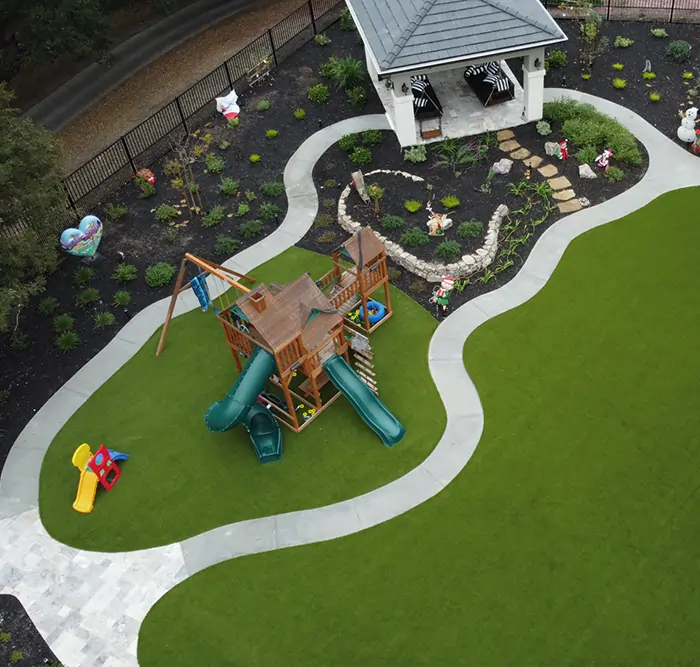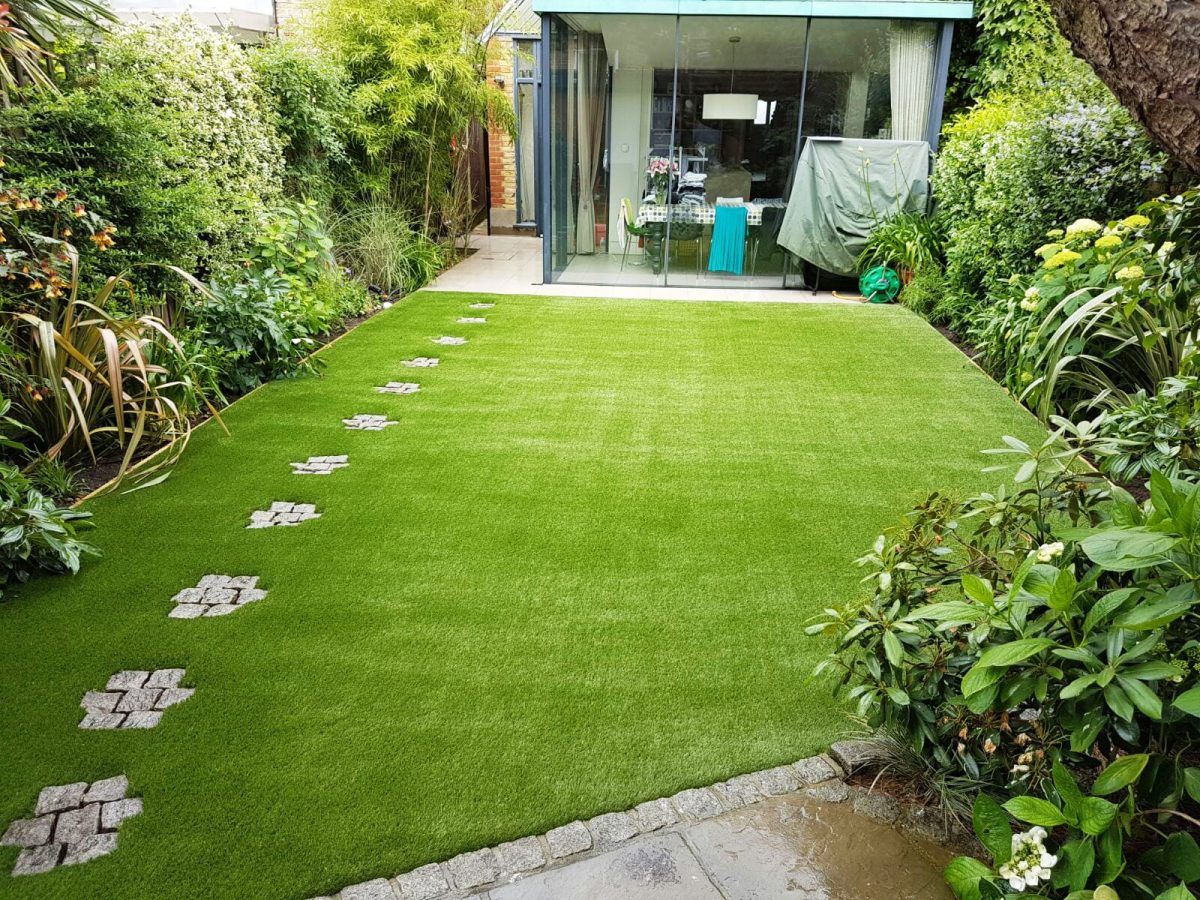Understanding How Synthetic Grass Works for Your Home and Yard
Synthetic lawn has emerged as a sensible service for homeowners looking for to improve their outside spaces without the concerns of standard lawn upkeep. Recognizing its composition, setup procedure, and the various types available can expose substantial benefits for both appearances and performance. However, the effects of choosing synthetic turf extend past mere look; they discuss ecological factors to consider and long-term sustainability. As we explore these elements, one have to consider exactly how this cutting-edge technique can basically alter the landscape of home gardening. What variables should you evaluate before making the transition?
Advantages of Synthetic Grass
Acknowledging the expanding popularity of fabricated turf, it is important to discover its numerous benefits. Unlike all-natural turf, synthetic lawn does not need watering, fertilization, or mowing, which equates to time and price savings for property owners.
Furthermore, synthetic grass gives a lush and continually environment-friendly look throughout the year, regardless of weather. This aesthetic allure boosts the visual high quality of any type of landscape, making it an attractive option for homes. Artificial grass is resilient and made to hold up against heavy foot website traffic, making it an excellent option for families with youngsters and pet dogs.
Security is an additional crucial consideration; contemporary synthetic grass is commonly made from non-toxic products and includes shock-absorbing technologies, decreasing the danger of injuries during play. Finally, synthetic grass is resistant to insects and weeds, eliminating the requirement for chemical therapies, therefore advertising a healthier outside setting. Overall, the advantages of fabricated lawn make it a compelling option for enhancing home and yard spaces.
Setup Refine Overview
When considering the setup of synthetic grass, a methodical strategy is important to ensure ideal outcomes. The installation process usually begins with extensive website preparation, which entails clearing the area of any type of existing turf, particles, and rocks. This step is crucial for developing a steady and degree foundation.
Next, it is very important to analyze the drainage capacities of the area. Proper drain is important to avoid water merging on the surface area, which can result in early wear or issues with mold. This may need excavation and the setup of a water drainage system if needed.
When the site is prepared, a base layer is set up, generally including crushed stone or decayed granite, compressed to develop a strong surface area. After accomplishing a smooth base, a geotextile fabric is laid down to inhibit weed development.
The last phase entails laying the synthetic grass itself. The turf rolls are put, reduced to fit, and protected at the seams making use of specific or adhesive lawn tape. Infill materials might be applied to enhance stability and improve the total look. Properly following these steps will cause a resilient and visually pleasing man-made grass installment.
Kinds Of Synthetic Grass

One of the key groups is domestic turf, which is often used in gardens, backyards, and play areas. Business grass, on the various other hand, is crafted for high-traffic areas, such as sporting activities fields and municipal parks.
One more classification consists of landscape lawn, which simulates all-natural lawn carefully to enhance the aesthetic appeal of yards and exterior areas. Furthermore, putting environment-friendly turf is particularly created for golf enthusiasts, including a much shorter heap height and a smooth surface area for an ideal placing experience.
Lastly, pet-friendly grass includes antimicrobial homes and resilient materials to make certain a hygienic and safe environment for animals. Picking the right kind of synthetic grass is vital for achieving the intended appearance her explanation and capability in your house and garden.
Maintenance Requirements
Proper upkeep is vital for prolonging the life expectancy and appearance of fabricated lawn. Routine maintenance not only improves visual appeal but likewise makes sure optimum efficiency. The key upkeep tasks consist of cleaning, rinsing, and evaluating the turf.

Washing the lawn with water aids eliminate dirt, debris, and pet dog waste. Making use of a hose pipe with a spray nozzle makes this task efficient and efficient. In areas prone to hefty rains, make sure appropriate drainage to avoid merging.
Additionally, regular inspections for problems, such as splits or loosened seams, are essential. Prompt repair work can avoid a lot more considerable problems and preserve the integrity of the lawn. By adhering to these upkeep needs, homeowners can take pleasure in the charm and functionality of their synthetic grass for several years to come, ensuring a vivid and welcoming outside area.
Ecological Factors To Consider
Fabricated grass provides an intricate variety of environmental considerations that require careful analysis. Artificial turf companies. While it decreases the need for water, fertilizers, and pesticides, which are normally linked with natural turf maintenance, there are considerable problems regarding its usage, manufacturing, and disposal
The manufacturing of artificial turf involves petroleum-based products, questioning about fossil gas intake and greenhouse gas emissions. Moreover, the installation process typically calls for a layer of infill, often made up of products like crumb rubber, which can release hazardous chemicals into the environment.

Disposal of synthetic grass provides one more challenge, as it is not eco-friendly and can add to land fill waste. Some recycling options exist, but they are not commonly readily available or available.
Verdict
In summary, man-made grass provides many advantages for property and yard applications, including aesthetic charm, reduced upkeep, and safety for pets and kids. Numerous types of man-made turf cater to different requirements and choices, while environmental considerations highlight its potential sustainability advantages.
On the whole, the benefits of artificial lawn make it an engaging alternative for boosting home and garden spaces.
When thinking about the installation of fabricated lawn, an organized technique is vital to make sure optimum results. The grass rolls are placed, cut to fit, and protected at the seams utilizing adhesive or see this page specific grass tape. Appropriately following these steps will result in a long lasting and visually pleasing fabricated turf installation.
In summary, man-made grass offers various advantages for residential and garden applications, including aesthetic allure, reduced upkeep, and security for animals and youngsters.